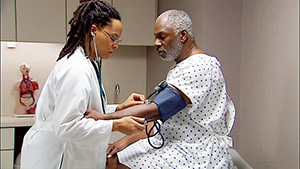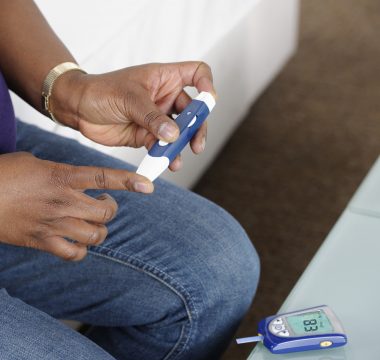“Do-it-Yourself Health” otherwise known as putting your health in your control helps the doctors and patients to have a productive relationship and more importantly; it empowers the patients to better understand their health concerns.
DIY is the perfect relationship for a successful marriage between you and your healthcare professional. Doctors may be your specialized overseer of your health; however no one knows you better then yourself. Here are some DIY things you can do for self-assistant to live longer healthier lives.
Know Your Stats
All doctors are consistent with wanting to know your numbers or statistics (STATS)…they take your blood pressure, a tube or two of your blood, or prick your finger for a spot or two of blood; they are wanting to know your STATS! Your STATS tell the doctor that everything is functioning as it should by guidelines given by American Medical Association. Yes, there are people running test and doing research to make sure people are living longer better lives.
In accordance with the guidelines, BlackPink wants you to know your STATS and know what they mean. While we can’t cover all your STATS, after meeting with our Physician panel here’s what they suggested would help them help you.
Blood Pressure– is the measure of how open your blood  vessels are to supply oxygen to the heart. Understanding your blood pressure is the key to keeping it at a health state.
vessels are to supply oxygen to the heart. Understanding your blood pressure is the key to keeping it at a health state.
The doctor talks about two numbers systolic (top) and diastolic (bottom)
- top number systolic tells the rate the vessels are pumping blood
- bottom number diastolic tells you the pressure in the arteries when the heart beats

Diabetes
 Everyone has glucose (sugar) in their blood obtained from food they eat. Glucose is used to give you energy and it also provides your organs, nervous system and muscles nutrients needed to function. Glucose is absorbed, stored and regulated by the small intestine, liver and pancreas.
Everyone has glucose (sugar) in their blood obtained from food they eat. Glucose is used to give you energy and it also provides your organs, nervous system and muscles nutrients needed to function. Glucose is absorbed, stored and regulated by the small intestine, liver and pancreas.
Our bodies only need a certain amount of glucose, depending how much work you are doing, if you are not eating and doing work your body uses the stored glucose to keep you functioning ; when you have consumed too much glucose (sugar) your organs can no longer store or regulate the abundance amount of sugar thus producing a high level causing diabetes.
Too much glucose (blood sugar) in your body can result in having nerves destroyed, lower your ability to fight off infections and in long term untreated cases cause blindness, heart, kidney disease and death. Important to note too little glucose (using sugar you don’t have in your blood or stored) can cause you fatigue, fainting, irritability and may affect your brain functions and in extreme cases cause loss of consciousness.

Know Your Foods
Sugar and Salt
The “Other” white stuff Sugar and Salt… Most think sugar and salt is simple the white sprinkles you shake or pour onto, or into something, but these two S words can “kill” you! The good news is if you’re reading this and educating yourself on sugar and salt you will put forth an effort to do better. Sugar and Salt is a bitter/sweet relationship with humans (pun intended). If used in moderation, these two Ss’ can make your intake of its products taste good but, if used too much, your food may taste good, however, your body will not feel good!
Here’s what you need to know:
Sugar and Salt is an acquired taste meaning you may not like
the taste at first, but after several times tasting it, you will start to like it! This is good and bad news- the good news – you can stop using and get use to the new taste absent of the sugar and salt or you can use it too much and continue to want that -taste that will be the bad news. After you read this, I’m hoping you will make better Sugar and Salt choices, that’s all!
Below is a common list of things that you have no clue is sugar or salt! It’s more than the “other” white stuff it’s breads, pasta, processed foods like meats, canned vegetables and dairy products!

